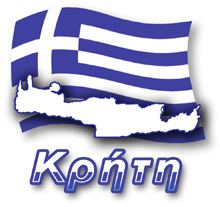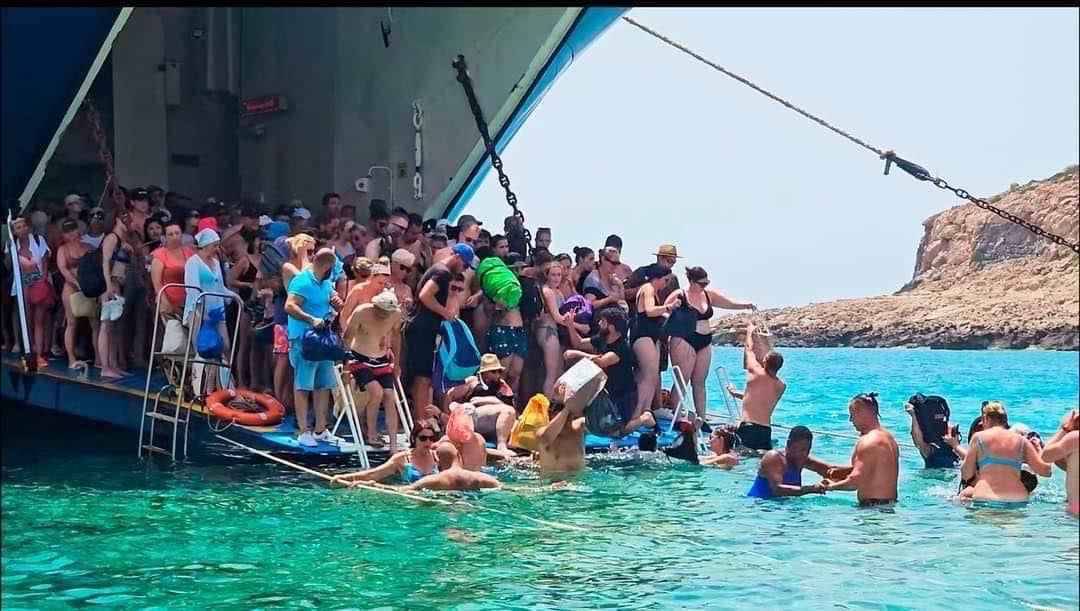
 2024-07-11 20:29:19
2024-07-11 20:29:19
Tourists who have purchased a cruise to the Balos lagoon in recent weeks will probably remember this trip for a long time.

Going ashore on Balos, photo source: flashnews.gr/
For several months, large ships have not been allowed to come closer than 100 meters to the shore. This is a consequence of the introduction of regulations to protect the area of the Balos lagoon, which is covered by the Natura 2000 program. In the third quarter of 2023, ships were banned from approaching the beach, and from May 22, 2024, the ban began to be effectively enforced with a financial penalty. As a result of this change, ships stop at a much greater distance from the shore. Tourists have to jump straight from the ship's gate into quite deep water (up to 1.5 meters) and then walk to the beach, holding only the ropes. In the offers of many local travel agencies, the stop in Balos is currently referred to as a "bathing stop". The term is very accurate because, as you can see, bathing is already provided when disembarking from the ship. Let us also add that the largest ship sailing to Balos takes up to 800-900 people on board.
Unfortunately, this disastrous solution ends quite unpleasantly for many unprepared people. Not everyone has adequate protection for their phones or cameras, so it is easy to get them wet when jumping into deeper water or losing balance while reaching the shore. Another problem was the lack of shoes for wading on the rocks, which are sharp in this place. Often, in many cases, this walk ended with severe injuries. Such "disembarkation" is also difficult or even impossible for people who cannot swim or are afraid of water. Access to the shore is also dangerous for the elderly, the less able, as well as for small children and pregnant women. Some tourists even decide not to disembark from the deck to the beach in this way and stay on the ship.
Interestingly, even before this legal absurdity came into force, many Cretan news portals warned about the consequences of introducing a ban on swimming directly to the beach. However, the Greek authorities seemed not to notice this situation and were deaf to any arguments. Only when photos showing people wading in water at least waist-deep began to appear on the Internet recently, did the Ministry of Shipping finally react.
Yesterday, on July 10, consent was given for the construction of a floating platform to facilitate disembarkation and re-entry from the ship. Unfortunately, at the moment it is not known how long it will take to build such a bridge and when it will be approved for use. The tourist season is in full swing, so let's hope that the authorities will be able to fulfill their promise before it ends.
Komentarze
komentarz z
Bardzo dobrze. Byliśmy w tym roku świadkami wielu przykrych zdarzeń przy schodzeniu na ląd::stłuczone kolana, skręcone kostki itp.
komentarz z
A czym władze tłumaczyły taki zakaz? Bo to totalny nonsens... Rozumiem żeby był zakaz że tak powiem od czoła laguny ale większe statki i tak podpływały "od tyłu" i tam wysadzały ludzi (chyba że się coś zmieniło) i żadnego zagrożenia nie było dla nikogo i niczego....
komentarz z
Nawet nie wiem jak to skomentować. Sam dzięki pomocy przyjaciół z wielkim trudem tam dotarłem i wróciłem na statek. Gdybym wiedział, że tam na Balos są takie problemy z wejściem na ląd, to nigdy bym się nie zdecydował. Koszt tej wyprawy też nie jest mały. Zraziłem sie bardzo do Krety. Wybierajcie Elafonisi. Tam jest cywilizowane przejście, dojazd.
Podobno już wróciło do normy
Wypełnij poniższy formularz aby dodać komentarz
lub kliknij w poniższy link aby skorzystać z możliwosci komentowania przez facebooka:
https://www.facebook.com/crete.poland/posts/873876748119924